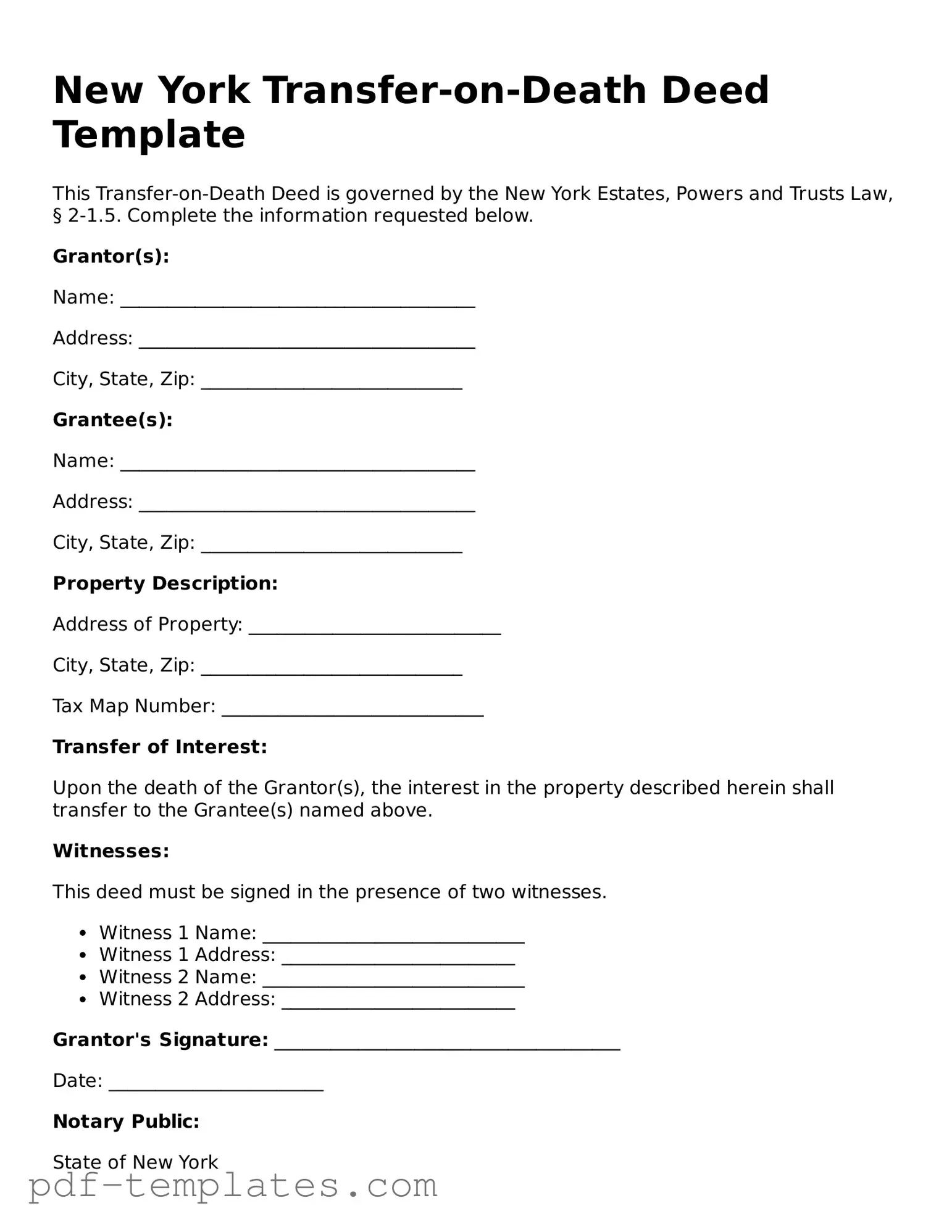The New York Transfer-on-Death Deed (TODD) is similar to a Last Will and Testament in that both documents allow individuals to express their wishes regarding the distribution of their property after death. However, a will requires probate, which can be a lengthy and costly process. In contrast, the TODD allows for the direct transfer of property to designated beneficiaries without the need for probate, simplifying the process and potentially saving time and money for the heirs.
For those interested in leasing commercial space, the necessary Commercial Lease Agreement details will assist in establishing clear terms between tenant and landlord. This document plays a vital role in defining the obligations and expectations of both parties involved, thereby promoting a smooth rental experience.
Another document comparable to the TODD is the Revocable Living Trust. Like the TODD, a living trust enables individuals to transfer assets to beneficiaries upon their death. However, a living trust can also manage assets during the individual's lifetime, allowing for greater control and flexibility. While both documents avoid probate, a living trust may be more complex to set up and maintain than a simple TODD.
A Beneficiary Designation form is similar in that it allows individuals to name beneficiaries for specific assets, such as bank accounts or retirement plans. This document ensures that the designated assets pass directly to the beneficiaries upon the individual’s death, avoiding probate. Unlike the TODD, which applies to real estate, beneficiary designations typically pertain to financial accounts and insurance policies.
The Life Estate Deed is another document that resembles the TODD. It allows an individual to retain the right to use and benefit from a property during their lifetime while designating a beneficiary to receive the property after their death. While both documents facilitate the transfer of property outside of probate, the life estate deed involves a retained interest that can complicate ownership rights during the grantor's lifetime.
A Transfer-on-Death Account (TOD Account) functions similarly to the TODD by allowing individuals to designate beneficiaries for bank accounts. Upon the account holder's death, the funds transfer directly to the named beneficiaries without going through probate. This document is straightforward and effective for financial assets, much like the TODD is for real estate.
The Payable-on-Death (POD) designation is also comparable to the TODD. This designation allows individuals to name beneficiaries for bank accounts, ensuring that the funds are transferred directly to the beneficiaries upon death. Both the POD and the TODD simplify the transfer process, but the POD is limited to financial accounts rather than real property.
Similar to the TODD, the Durable Power of Attorney for Health Care allows individuals to designate someone to make health care decisions on their behalf if they become incapacitated. While not directly related to property transfer, both documents empower individuals to control their affairs and designate trusted individuals to act on their behalf. The key difference lies in the focus on health care decisions versus property management.
Finally, the Declaration of Trust can be seen as similar to the TODD in that it allows for the management and distribution of assets. This document outlines the terms under which assets are held and distributed, often avoiding probate. While it serves a broader purpose than the TODD, both documents aim to facilitate the transfer of property according to the grantor’s wishes without the complications of probate.
